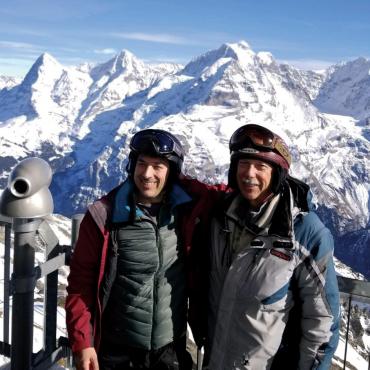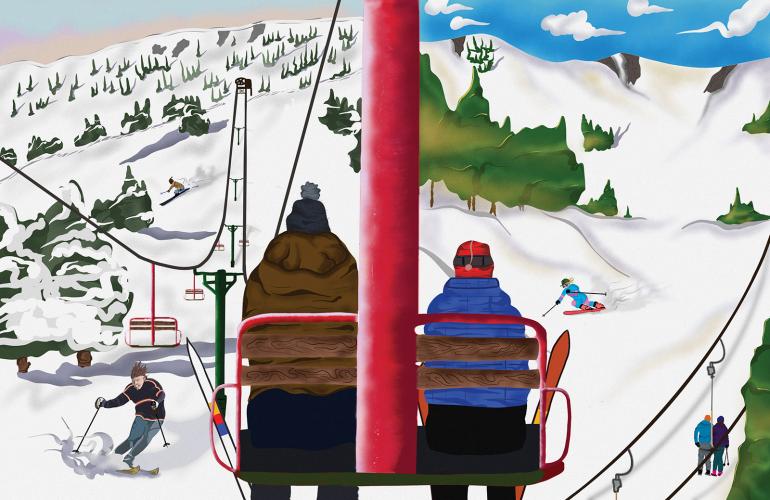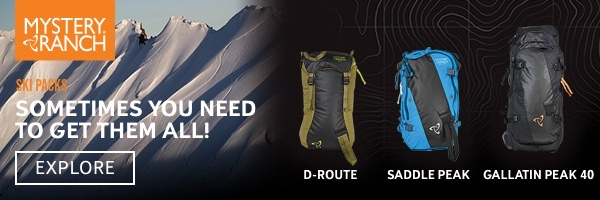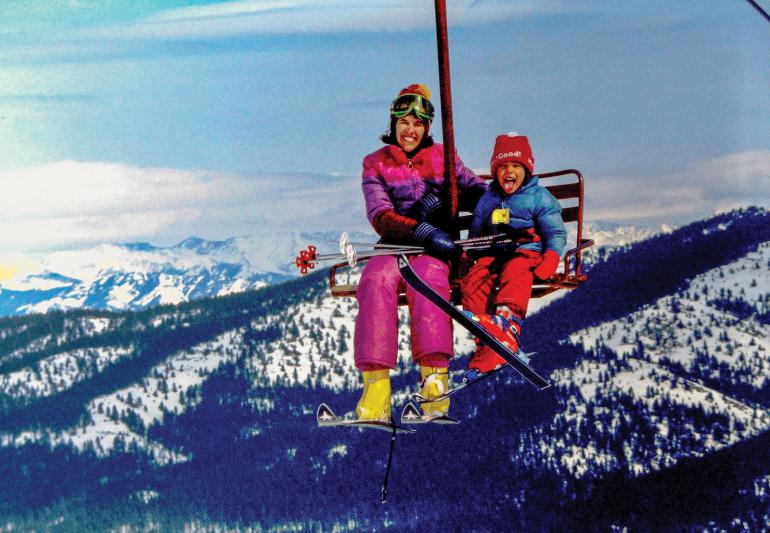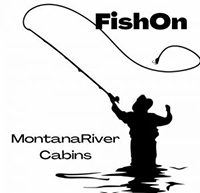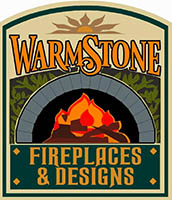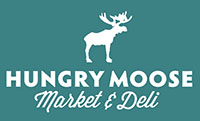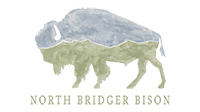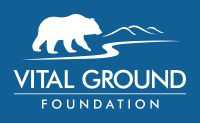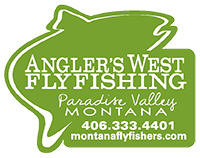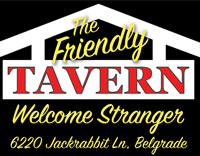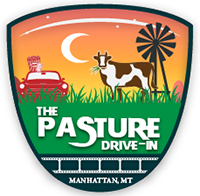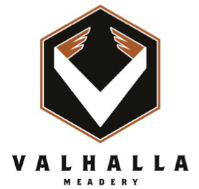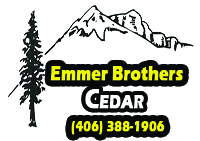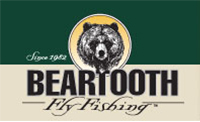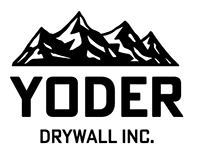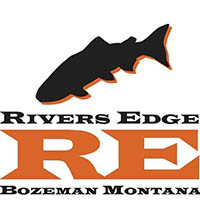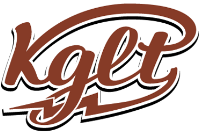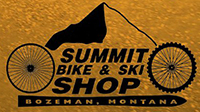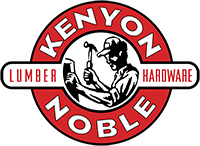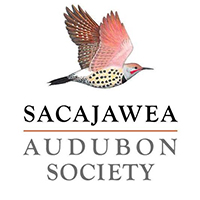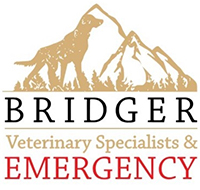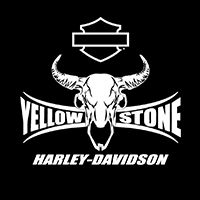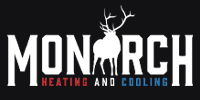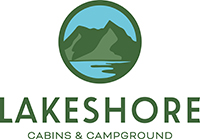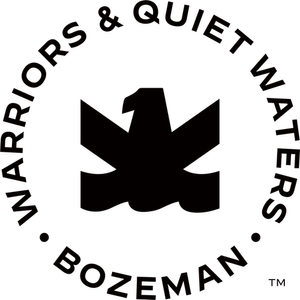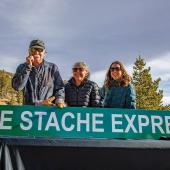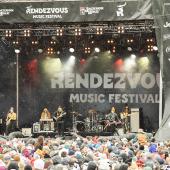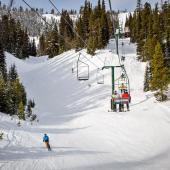Time Warp
Reminisces of the early days at Bridger Bowl.
There are a myriad of reasons why Bozeman is a great place to raise kids. Having your children grow up skiing at Bridger Bowl is one of them—a real-life alpine version of Father Knows Best or Leave It to Beaver. We look back at the process from two points of view: the dad and the kid. The time was the 1970s and early ’80s.
The Dad Remembers
Skis, boots, poles; hats, goggles, mittens. Getting kids out the door any time of day is a challenge, but hustling out first-thing for a Saturday-morning trip to B-Bowl taxed parenting to the max. We were always aware of what we called a “departure crisis.” Right at the crucial moment of exit, a skirmish, explosion, or bodily injury always seemed to occur—Cheerios and milk cascading over the kitchen table, or an interpersonal sibling wrong that can only be righted at that particular moment. It’s a setup for forgetting. As a safeguard against overlooked gear, we had each member of the household chant the mantra: Skis, boots, poles; hats, goggles, mittens. This mnemonic technique served us well, and I find myself chanting the same phrase on my way to the fishing stream or grocery store. That said, is it still possible to pop the lid of the SUV in the parking lot at Bridger and not have boots or poles? Definitely.
Our little sing-song chant embodies many changes between the “then” and “now” of skiing at Bridger. Take skis, for instance. The hallmark of earlier skis can be summed up with one word: length. When standing with your skis, you had to look up—way up—to see the tips. Longer meant you were better. Short skis were frowned upon, if not hated. The spacing of moguls on Bronco was trashed by short skis. With long, stiff, narrow skis, there was only one way to ski the crud: don’t. A foray into the sludge of day-old broken powder assured a face-plant or sled ride. The modern skis are oh-so forgiving. And snowboards weren’t in the memory chant.
My old boots were rear-entry. The back opened, in went the foot, and snap-snap, you’re in. No chorus of grunts and groans that accompany the on-and-off of today’s boots. And those boots were comfy. So, of course, they don’t make them that way anymore.
Instead of straps, the pole-grip had a cage that you slipped your glove through, like the guard on a pirate’s cutlass. Convenient, but the arrangement proved unsafe for the human thumb.
Take skis, for instance. The hallmark of earlier skis can be summed up with one word: length. When standing with your skis, you had to look up—way up—to see the tips.
Scratchy wool hats with a dinglebob on top have wisely given over to the new norm at Bridger Bowl: helmets. Showboat types used to blast downhill with no hat or goggles. Hair flowing, teeth gleaming, aglow with a suntan. These hot-shot guys and snow-bunny gals radiated “look at me.” And we did. Like the bare-chested dudes at a frigid Bobcat football game, you had to look, even admire, knowing that common sense had been abandoned.
Speaking of frigid, putting on equipment in Lot G before global warming required survival skills. As my memory serves, we almost never got the final boot snapped before fingers were numb, bone-chill had set in, and patience was exhausted. There was no chit-chat with folks in the adjacent vehicle. Get your gear on and get moving before you became hypothermic.
What I miss most about the old Bridger is the beloved two-seat chairs, with the wooden slats having been painted and repainted red, and the pole in the middle that kids would clutch, hanging on for dear life. The current triple and quad chairs are efficient, but worse for conversation—particularly when the ride up is with your kid. What an opportunity it was to have your offspring one-on-one. I’d start the ride with a recap of the last run and a plan for the next. Then, I’d seize the remaining moments to impart wisdom, educate, or otherwise brainwash my captive. I may have overdone it on occasion. “Dad, that’s the 29th time you’ve told me that. I’ve given it a number; lecture #29.” To which I’d reply, “I’m just giving parental guidance. You know, like at the movies, PG. And it’s my parental responsibility to guide you.” Retorted Joe: “Don’t worry, Dad. I release you from all responsibility.”
We waited until the kids were well past toddler-stage to introduce skiing. No matter how enthusiastic the parent, it doesn’t work to start two-wheeled biking, skiing, or calculus before a child is ready. We waited until the time was right, and we waited until spring. No need to fight the cold; we could concentrate on fun and skills. The beginner area of today with Sundog and Snowflake is friendly, welcoming, and quickly mastered. The old area was short and had more of a sink-or-swim feel.
I miss the T-bar. Loading a macro adult with a micro kid could be a carnival act of a flailing, frightened child with a hold-your-breath anxious parent. There was always a disquieting notion as the T-bar unreeled bungie-like from an overhead cable. When you tucked it behind your butt, you thought of the geometry and physics, and expected to be launched to the moon rather than uphill. You never got used to it, but up you went, both riders smiling all the way.
With all the changes over the decades, one thing remains constant: the two scariest words in the English language are Hully Gully. And the three scariest words: Follow me, Dad.
The Kid Remembers
When I first started skiing at Bridger Bowl, there were seven ski lifts: the rope tow, T-bar, Virginia City, Alpine, Bridger, Deer Park, and Pierre’s Knob. I started, of course, on the rope tow, and I don’t remember much about it. But I remember the jacket I wore: a Michelin Man–style blue down puffy that smelled like a wet dog when it got soaked from melting snow. I also remember holding onto the orange plastic rope-tow handles for dear life, and one defining moment when a handle got caught in my coat pocket, and it seemed for a few horrifying seconds that the big cog-wheel at the end of the lift would swallow me up—until an adult pulled me from the jaws of death and pointed me downhill.
From there, I quickly graduated to the T-bar, my favorite lift as a kid—not because of the short and generally uneventful trip down the hill, but because of the thrilling ride up. First was the difficult task of half-sitting on the narrow wooden bar without falling off. There was no laziness, no letting the magic carpet move you along and taking a seat at your leisure. No, this was a coordinated and precisely-timed effort. If your partner failed to climb aboard at the same moment, or lost his grip and slipped off—which happened often—the resistance on your side of the T-bar went from a comfortable push to virtually zero. It was similar to a vicious playground teeter-totter prank of the era: the “cherry bomb,” whereby the kid on the bottom of the teeter-totter unexpectedly got off, and the kid at the top dropped back to earth at 100mph.
I started, of course, on the rope tow, and I don’t remember much about it. But I remember the jacket I wore: a Michelin Man–style blue down puffy that smelled like a wet dog when it got soaked from melting snow.
An appropriately-matched partner in height and weight was important. I often rode up with my dad. At six feet tall and 180 pounds, he loomed over my young self. Imagine the challenge of holding onto the T-bar with such a mismatch—your side pointing up at a 45-degree angle, skis barely touching the ground. But that was the fun part when you were little: skiing up the hill, especially when there was powder, turning your skis slightly and making fresh tracks in the snow. Or, if riding alone, T-bar straddled between the legs, you could make left and right turns the whole way. Turning was highly illegal, but I don’t remember ever getting yelled at.
Next on the lift hierarchy was Virginia City. I won’t waste much time on it, as Virginia City was a boring lift that provided access to some green-circle runs where the only danger was running out of momentum on the flats and having to duckwalk. Perhaps the only plus to Virginia City was the easy disembarkment at the top via a short and mellow ramp. Getting onto the lift as a kid, however, was no joke. That lift chair came around pretty darn fast, and about every third time I remember panicking, crossing my skis, and getting boosted up by the strong, kind lift operator as my crossed ski popped off. This, in retrospect, was undoubtedly irritating for my dad, but he never complained about it. In those days we had ski straps, not brakes, and the ski would dangle below my boot, and my dad would reach down acrobatically and pop it back on.
Those old Riblet lifts were painted bright red and had wooden slats for a seat and a pole in the middle. As a kid, you frantically clung to that pole as you got on the lift, and then hugged it in a comforting manner throughout the ride. At the top, there was usually another orchestration to deal with in figuring out whether to go left or right. This became complicated when you both needed to get off in the same direction, and one of you didn’t know which way was which. Dad would say, “Right,” and I would say, “This right?” and sometimes I’d point to the left, and he’d say, “No, the other right,” and then the off-ramp would suddenly be upon us.
Scratchy wool hats with a dinglebob on top have wisely given over to the new norm at Bridger Bowl: helmets. Showboat types used to blast downhill with no hat or goggles. Hair flowing, teeth gleaming, aglow with a suntan.
The Alpine lift was long and moved at a leisurely pace. But Alpine had a dark side: Midway. This was a platform where only the most intrepid of skiers embarked. You waited for an empty chair, which the lifties ensured was every four chairs or so, then shuffled out like a madman—not easy when you’re a little kid with no poles—then plunked yourself into the chair, which was suddenly moving alarmingly fast, and you clung to that middle bar as if your life depended on it, which it did. For if you fell out, you landed in the yellow safety net, and if you missed that, or bounced out of it, you fell into a gaping morass of death. I realize now it was just a gulch, but in those days it looked like the Grand Canyon.
But if you survived (I did), you could ski down one of the Three Bears. Papa Bear was the first route, and ironically the easiest one: wide and with no trees or obstacles, save for a few beginner skiers flopped onto their sides. Then there was Mama Bear: a bit steeper with a few trees. But Baby Bear was my personal favorite: the steepest, with plenty of trees and shrubs and the occasional drop to circumnavigate. Baby Bear could be a hard sell to my dad, as it involved a long traverse and could grow ominous moguls at times. But it was a powder treasure-trove on snowy days.
For a kid, no run beneath the Alpine lift was complete without going down Rugrat. Aptly named, this was a roller-coaster ride of dips, hills, bumps, and tree branches, which my sister and I loved to zip through as fast as possible on our short skis, perfectly designed for such adventures. For adults on their old knees and long skis of the ’70s, Rugrat mostly just involved swearing. Rugrat still exists, but it’s been neutered—some cruel work crew went through there with a chainsaw and a bulldozer and removed all the stumps, lumps, and bumps, killing all the joy. It’s nothing more than a smooth little trail through the woods now. Yawn.
Those are my remembrances of the lower lifts at Bridger Bowl as a kid several decades ago, at a place I love so much that I lobbied (unsuccessfully) to name my son “Bridger.” We’ll save the other lifts for another time. As a kid on my orange Sarner “Hop” skis, those lower lifts were plenty.

